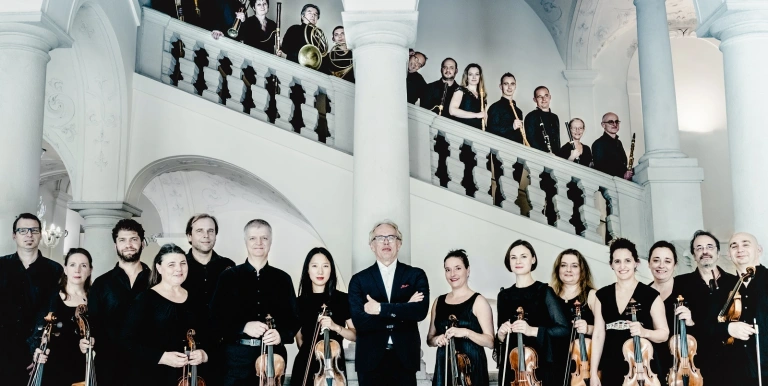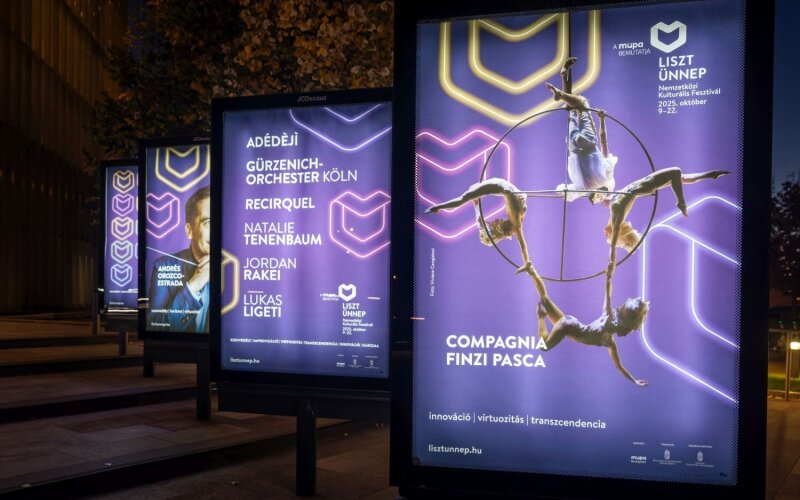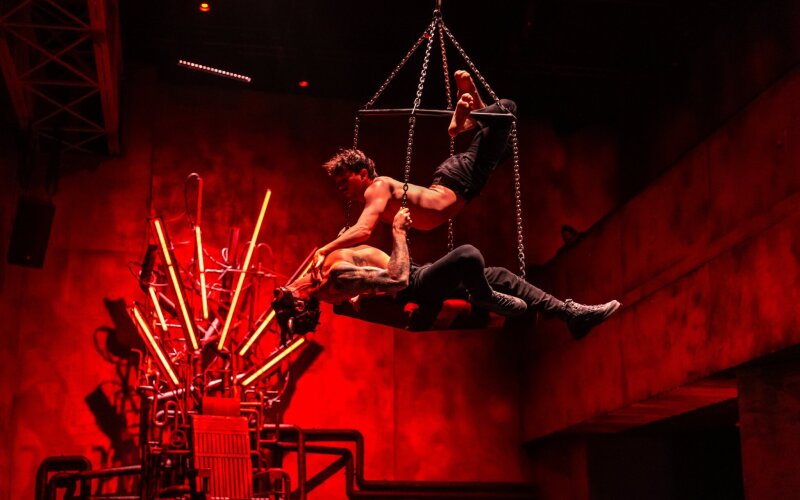In this series, distinguished artists at Liszt Fest tell us what the composer’s art means for them, which works have captured their hearts, and what makes the work they will perform at the festival important to them. In the last chapter of the series we have asked the conductor of the last concert of the festival.
By his own account, Martin Haselböck has taken an immense interest in the music of Franz Liszt since a very young age, an enthusiasm that has led him in new directions as an organist and especially as a conductor. He and his ensemble, the Orchester Wiener Akademie, were the first to perform and record Liszt’s orchestral works on period instruments. They played rarities at their Budapest concert three years ago, and now on 22 October, the composer’s birthday, well-known works shine in a new light in the Pesti Vigadó concert hall.
Haselböck had his first great experience of Liszt when he was fifteen, when the world-famous pianist Alfred Brendel listened to him play the organ, then put the score of a Liszt piece for piano in front of him and asked if he knew why it contained an instruction for organ stops. The young musician was intrigued by the question and enthusiastically immersed himself in the composer’s work. It was only later, in Weimar, that he realized what a large proportion of Liszt’s oeuvre was as good as hidden in obscurity: while Haselböck regularly performed three of his popular works for the organ, he found some fifty more pieces for the instrument in the library that holds the composer’s works.
“Liszt composed the great organ works for virtuoso organists who could play as fast as pianists,” he recalls. “I performed these many times before I discovered the great interest of those works of which there are different versions. In the pieces originally written for orchestra and then revised for the organ, Liszt used the instrument as if it were a symphonic orchestra – you can almost hear the instruments.” The process also took place in reverse, he says, with Liszt adapting many things from his organ pieces to his orchestral works. “When I started conducting, the general preconception was that Liszt was not a good orchestrator. I on my part realized that, compared to Bruckner and other contemporaries, including even Brahms, Liszt’s orchestration is often more imaginative, more creative.”
The difference that period instruments make on Liszt’s sound was an exciting discovery for Haselböck as a conductor. This is as true of the orchestral pieces as of those written for the piano; in the case of the latter, there is of course a great emotional boost to being able to play an instrument the composer himself once performed on. “I’m very proud that we were the first orchestra to record Liszt’s works with period instruments,” he says, but adds that the venue also makes a great difference. “There is a concert hall in Doborján [Raiding], Liszt’s home village, which was said to be suitable only for chamber music, whereas it turned out that in Weimar Liszt performed his works in a smaller space. So that was where we made the recordings, and the sound was fantastic.”
I ask Haselböck whether he has a favourite Liszt piece. “Liszt worked very fast, and as a result he composed a very large number of pieces. Some of these did not turn out too well, as is the case with every composer. But even with these works, I find it very interesting how Liszt takes ideas from other artists and transforms them, little by little, into his own music. I love it how in Fantasy and Fugue on the Theme B-A-C-H and Weinen, Klagen, Sorgen, Zagen, he takes Bach’s music and adds his own material, which at one point becomes the only thing going on. The piano arrangements of Beethoven’s symphonies are also brilliant in the way the orchestration is reproduced in the piano part. Some of Liszt’s students criticized him for taking all his themes from others, never using his own. When he does use his own, as in the Faust Symphony, the result points far ahead towards the music of the 20th century. But if I really had to name a favourite, it would be the first movement of the Dante Symphony. It truly is a film score,” he adds, laughing.
At Liszt Fest, the conductor and his orchestra will perform two compositions for piano and orchestra, as well as two symphonic poems. “Every note Liszt committed to paper was connected to something in the world beyond music, often in literature or the visual arts. The symphonic poems performed in the concert, for example, are based on literary themes. The Ideals reflects on a poem by Schiller, whose subject is fairly abstract, almost philosophical: what is humanity’s ideal? And interestingly, if you read the poem and listen to the music, you can follow the character of the original poem in Liszt’s piece almost stanza by stanza. Tasso, in its turn, is related to the world of theatre, like many of Liszt’s works: it was made to be an overture to Goethe’s drama. Liszt, however, was so fascinated by the subject that he added his own commentaries and expanded the work. But like all good overtures to plays, the music reveals the main drama of the story.”
In the two pieces for piano and orchestra, explains the conductor, it is up to the soloist to tell the story of the work. “Malédiction is so avant-garde that you would think it is the work of a 20th-century composer. It is so modern, so wild; even its title speaks of anger and destructive forces. Incidentally, it is still open to question whether it is a work in its own right or a fragment from a larger concerto. And Piano Concerto No. 1 is less introverted than No. 2, it has more of the character of a march. We really look forward to working with our young Hungarian guest artist, Fülöp Ránki.”





